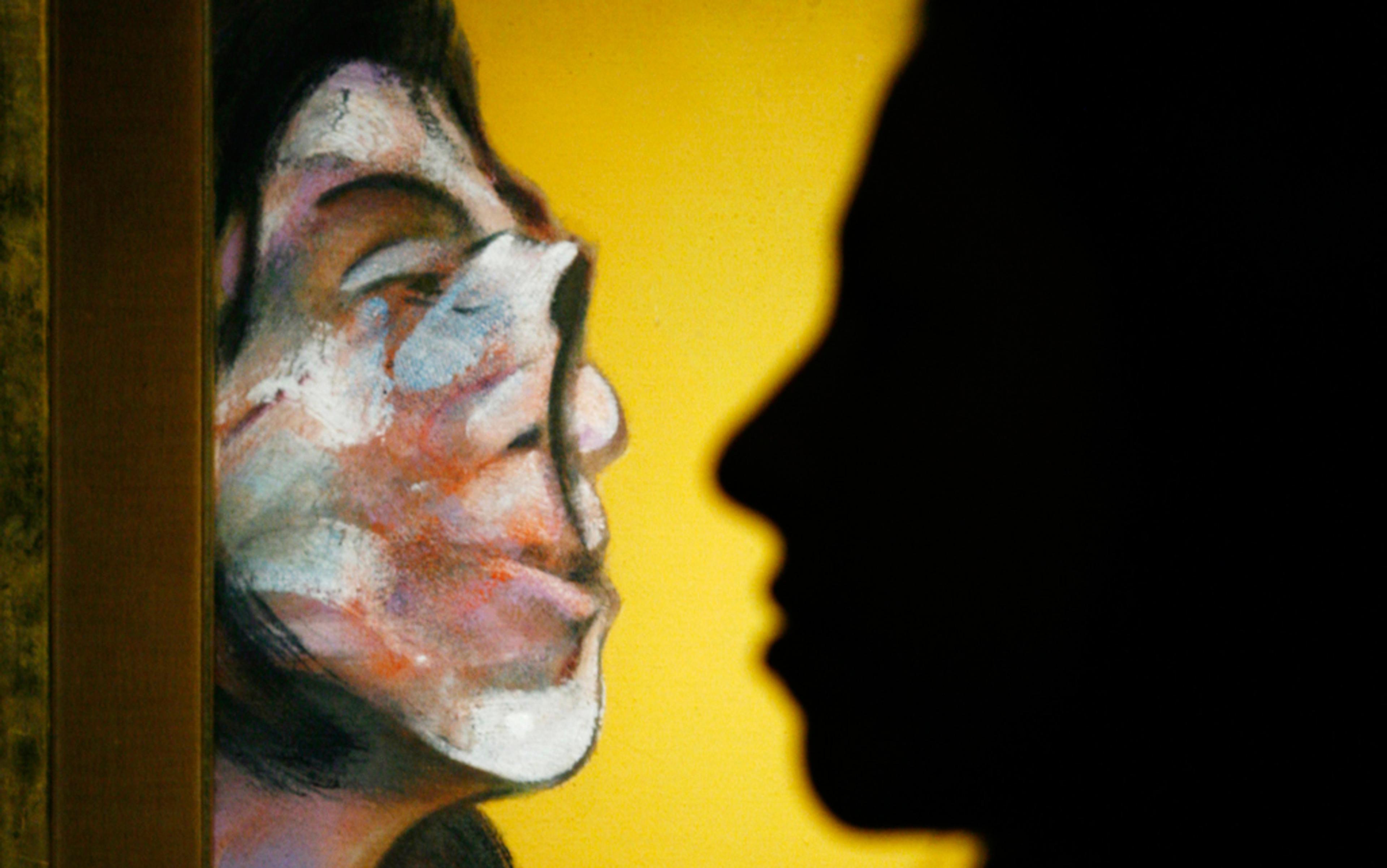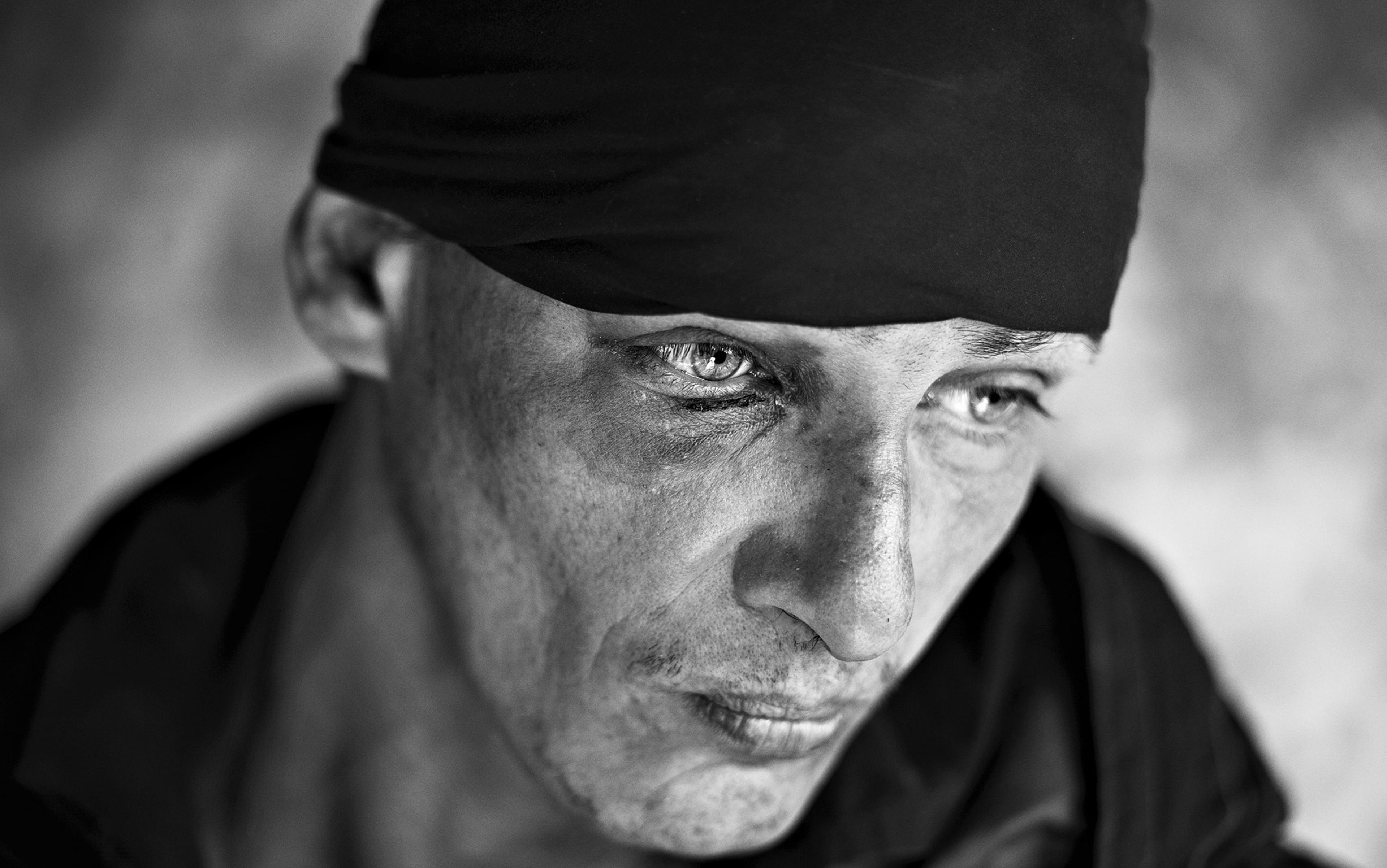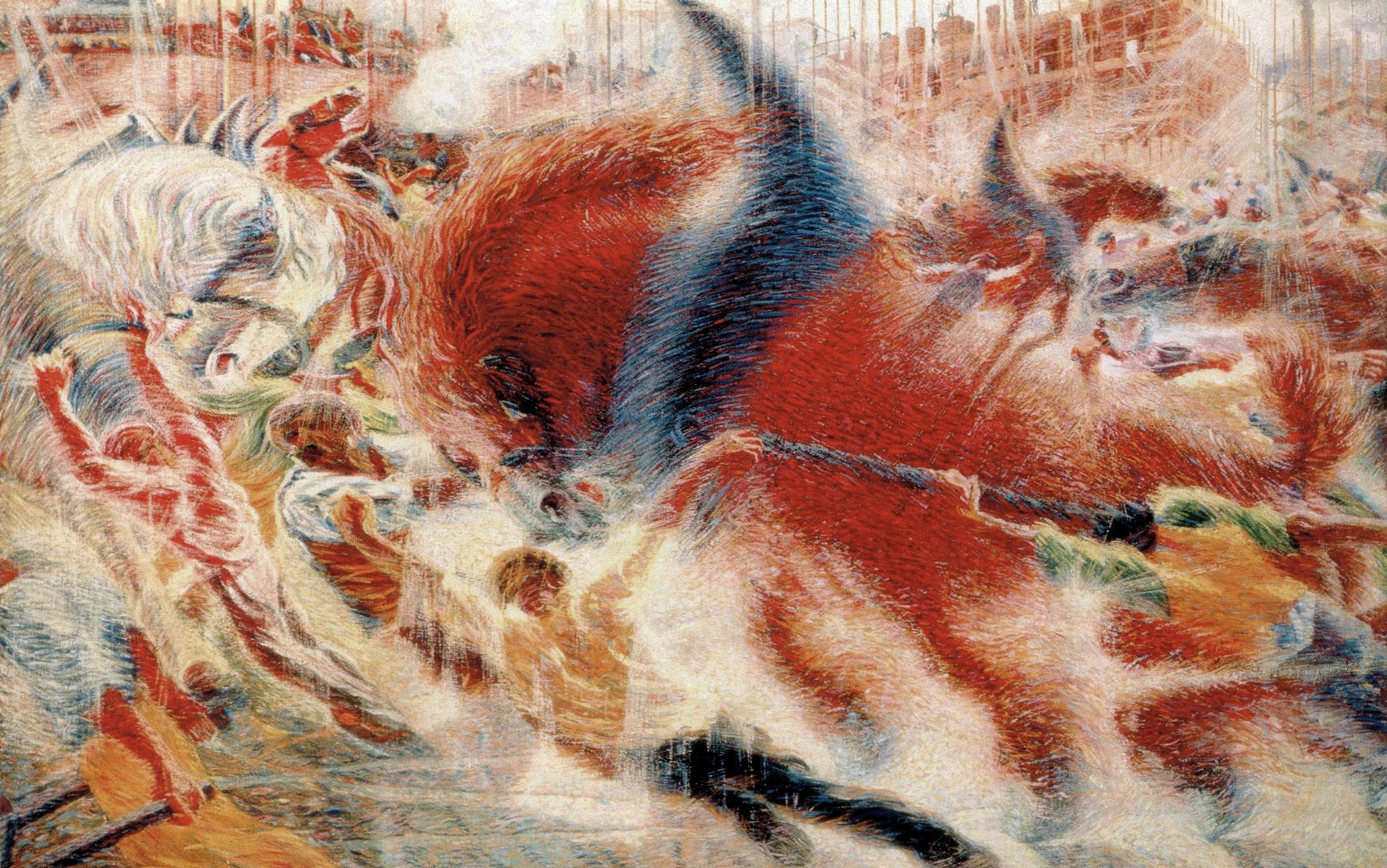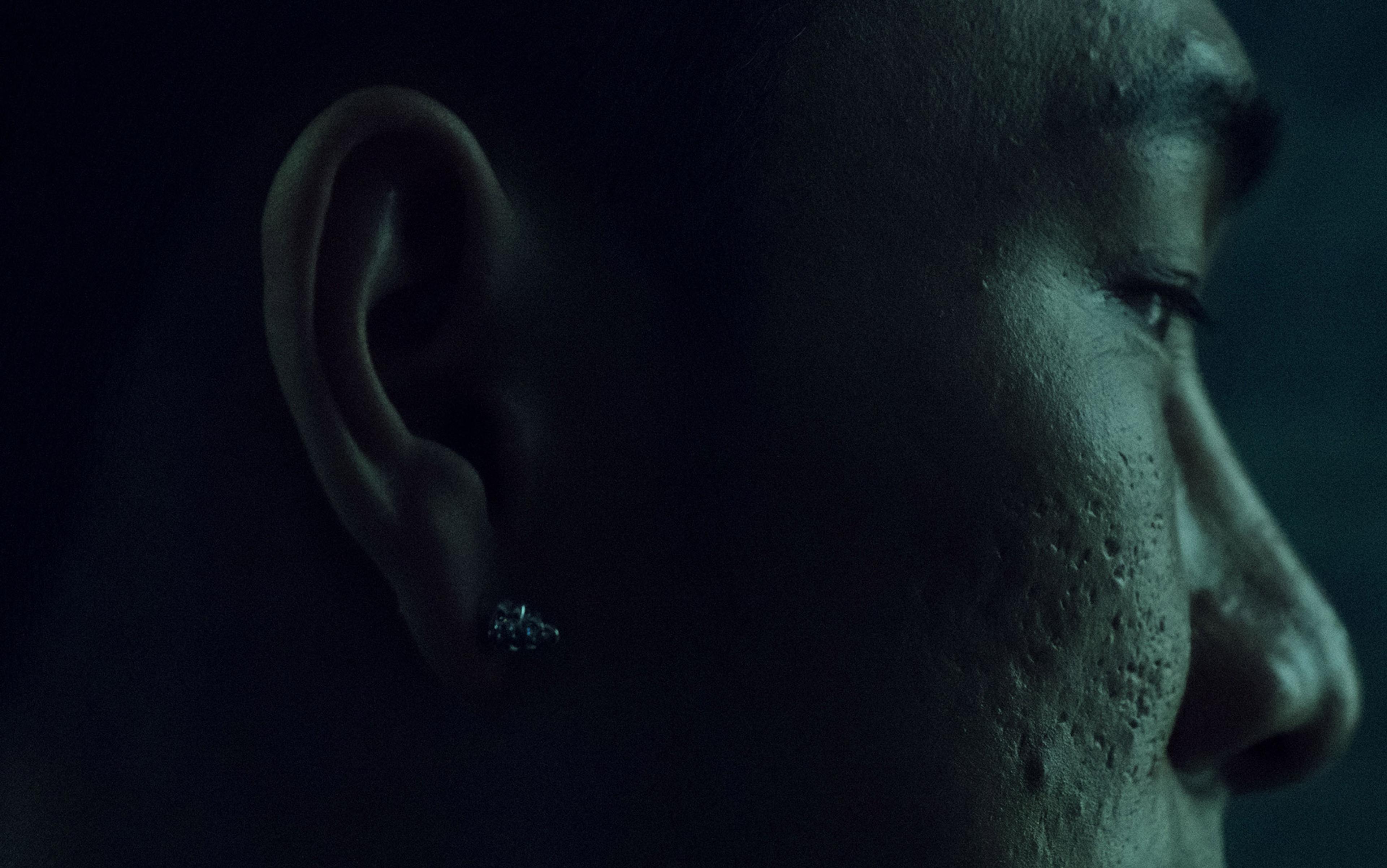Rosie’s marriage did not last long. But many months after she returned to her parents’ cottage on a south Indian tea estate, her husband’s voice rattled around her head like a vengeful earworm, berating her for her dark skin and overall worthlessness. One day, another voice spoke up. It was gravelly and hoarse, like a grandma who had chain-smoked cheroots for half a century. ‘There is a goddess within you,’ it rasped. ‘She can make you fairer and prettier. Listen to her instructions.’ That is how Rosie arrived at the beauty regimen she followed every day for the next 10 years: collecting excrement at dawn, and carefully smoothing it across her limbs and face.
The regimen caused her father, a widower, to eject her from his home. Rosie eventually found herself in a shelter on the outskirts of the city Chennai. Here, a kind young man informed her that she suffered from schizophrenia, and that the old lady didn’t exist. Rosie listened to what he said, but she was not sure she believed him. After all, the old lady said only what Rosie had been hearing all her life, from her mother, her friends, her husband, and her television set. They all spoke in one voice, telling her that dark skin was unlovable, that fairness was synonymous with femininity, and that she should whiten her skin at any cost.
I first heard about Rosie from the social worker Vandana Gopikumar, co-founder of the Banyan, the shelter in Chennai where Rosie lives. She said hers was one of the most extreme cases she’d seen. ‘But what struck me then,’ she said, ‘was how much the voice reflected her socio-cultural background.’ Like many epiphanies, Gopikumar’s sounds startlingly obvious. It seems natural that imagined voices reflect the fears, anxieties and desires of their hearers, and for these emotions to be shaped, in turn, by the pressures and expectations of local culture.
Eugen Bleuler, one of the fathers of modern psychiatry, certainly thought so. During his 30 years as director of the picturesque Burghölzli asylum in Zurich in the early 20th century, he observed that ‘almost every schizophrenic who is hospitalised hears voices’, and that even the oddest of these voices spoke eloquently of the patients’ ‘strivings and their fears… their entire transformed relationship to the external world… above all, [to] the pathological or hostile powers that beset them’. In his book Dementia Praecox; or, The Group of Schizophrenias (1911), he noted that these voices often reacted to the patient’s immediate circumstances: ‘While the patient is eating, he hears the voice saying: “Each mouthful is stolen.” If he drops something, he hears: “If only your foot had been chopped off.”’
These shades of meaning were dismissed by the influential German psychiatrist Kurt Schneider, who declared voices ‘first-rank symptoms’ of psychosis in 1959. In his estimation, they were identifying markers of madness, worthless aural garbage to be carpet-bombed into oblivion. Then the voices were essentially leached out of madness with the rise of psychiatric medicines in the 1960s and ’70s, when the brain and all it contained became far more consequential than the most assiduously recorded patient history.
Over the past decade, however, a counter-movement has gained force. An increasing number of researchers and practitioners have gone from dismissing hallucinated voices as worthless ravings symptomatic of psychosis to listening carefully to what they say. What they have heard has been infinitely varied and surprisingly complex. And the effort to deal with these complexities is leading to entirely new, even inventive forms of treatment.
One such treatment saved Peter Bullimore’s life. He had been hearing voices since he was a seven-year-old sitting by himself in a park in the northern English city of Sheffield: three voices, to be exact – two that threatened to harm him, and a snarky third that egged them both on. When he turned 30, the voices convinced him that the world conspired against him, and he had ‘a massive breakdown’. Then commenced the ten most miserable years of his life. ‘I was taking 25 drugs a day, I slept 20 hours a day, I couldn’t walk,’ Bullimore recalls. ‘I became this drooling zombie. I lost my family, my home, my children, my business. I lost everything.’
The mounds of medication subdued the bickering in his head. But he still heard a host of intensely discouraging voices – and none of them were imaginary. ‘I saw a number of psychiatrists, and basically they all told me my life was over,’ Bullimore tells me over Skype. ‘One said: “You’ll have to take medicines all your life, and you’ll never work again.” Another said: “Oh, voices saying nasty things? Well, we must give you more medicines then.”’ They were all uniformly incurious about what occasioned the dramatic change in his circumstances. ‘Within a four-month-period, I’d gone from running a million-pound-business to a chronic schizophrenic,’ he says, ‘and not one of them had ever asked me about my narrative.’
When someone finally did, it was a revelation. Five years after his breakdown, Bullimore was invited to a meeting at a nondescript church hall. He found himself amid nine other people, each of whom spoke about their life experiences and the voices they heard: voices that commented on everything they did, voices that directed them to harm themselves, voices that made them laugh. When it was his turn, Bullimore described his angry, demonic, taunting voices – something his parents, friends and psychiatrists had discouraged him from doing. ‘That felt so liberating,’ says Bullimore, ‘like I was finally taking off a mask.’
Bullimore had stumbled onto a local chapter of the Hearing Voices Network, an international community of voice-hearers founded in 1988 by the Dutch social psychiatrist Marius Romme, who had originally recruited a group of voice-hearing patients through an announcement on TV. That original research had convinced him that the experience was far from aberrant or even problematic; surveys, in fact, have found it to be more common among the general public than left-handedness or vegetarianism. Rather, it was the inability of a small subset of voice-hearers to cope with the experience that made the difference. This subset, he observed, had often experienced some form of emotional trauma or abuse.
Romme’s impression has since found support from the sweeping Adverse Childhood Experiences (ACE) Study, a decades-long epidemiological look at the lifelong health impact of emotional pain in childhood, spearheaded in the 1980s by the Centers for Disease Control and Prevention in Atlanta and the Permanente Medical Group in San Diego. There were eight types of adversity, including physical, emotional and sexual abuse, or witnessing domestic violence, or having a parent with mental illness. One finding from that larger study, based on a massive survey of 17,337 Americans, was published in the journal Child Abuse and Neglect in 2005: any kind of adverse childhood experience drove up chances of hallucinating by up to 2.5 times. But those whose childhoods were marked by seven or more of these experiences had a five-fold increased risk of experiencing troubling auditory hallucinations when compared with peers who had uneventful childhoods.
voices are not signs of sickness, but bearers of clues about past trauma
This chimes with a 2012 meta-analysis spanning 18 studies, 2,048 psychotic patients and 1,856 non-psychiatric controls, by researchers at the University of Liverpool and Maastricht University in the Netherlands, which found that patients who suffered from psychosis were nearly three times more likely to have been exposed to childhood adversity than controls.
In Romme’s model, voices are not signs of sickness, but bearers of clues about traumatic histories, holding metaphorical meanings about emotions that need to be worked out. He and his colleagues have found that many of these clues were laid bare just by giving voice-hearers a safe, democratic space in which to share their experiences, and ‘emancipate themselves’.
When Bullimore started to speak out about the menacing chorus in his head, he realised that the voices ‘were talking about things that happened to me a long time ago, things I hadn’t dealt with’. When he was a child, he had been abused by three of his babysitters. He never spoke of these experiences until well after that first meeting, when a social worker questioned him in detail about his voices. Following a structured questionnaire – developed by Romme and his colleague Sandra Escher, with the help of his voice-hearing patient Patsy Hage – he asked Bullimore about the identity and nature of his voices; how he explained their existence; and the stresses and traumas he had faced at various points of his life.
Bullimore was initially perplexed when the social worker asked him ‘who’ the voices were.
‘I told him, what do you mean, what identity do they have? They’re just demonic,’ Bullimore recalls. He looked me straight in the face, and said, “Peter: address the demons of your past.”’
That was ‘a real turning point’. Bullimore realised that the voices weren’t a ‘separate entity’. They were parts of him responding to all that happened to him, with fear, anger and shame. Even the ‘demonic’ voice that mocked him for ‘enjoying’ the abuse was a reflection of his guilt. ‘My body told me it was nice,’ he says matter-of-factly.
Those ‘demonic’ or domineering voices, says the British clinical psychologist Rufus May, are fragments of selves that break off during a traumatic event. ‘A lot of people dissociate or lose awareness during trauma or abuse, particularly children,’ he says. ‘It’s like, I might leave the building [during the experience], but the abused voice is the part of me that still went through it. So they usually have something important to say.’ Whatever that is, May has to coax it out of them through a technique called ‘voice dialoguing’, which Romme borrowed from the Amsterdam-based spiritual coach Robert Stamboliev. ‘I use the patient as the spokesperson of the voice, and then with their help, I ask the voice how they feel, what they want, why they behave the way they do,’ May explains. ‘Once I get their view, I act as a mediator between the voice and the person.’
It sounds a bit like an exorcism of sorts, but May disagrees with the analogy. ‘We’re not trying to drive out the voice,’ he says, ‘we’re just trying to negotiate peace.’ Recently, May treated a young man who was constantly tormented by a voice that asked him to hurt himself. When May asked the patient to ask the voice why he gave him such commands, the voice responded: ‘To show people how powerful you are.’ May then asked his patient to ask the voice: ‘If I find other ways of asserting myself, and stop giving into people around me all the time, will you then stop asking me to harm myself?’ The voice practically shouted back: ‘But that’s what I’ve been trying to tell you for years!’
A few years ago, Bullimore started cutting back on his medicines, and was eventually able to stop taking them altogether. Soon enough, his voices returned, streaming into his ear as if from a forgotten but familiar radio station. But in the course of his many therapy sessions, and those he had conducted with his fellow voice-hearers, he’d come to understand, even sympathise with them. They became less mysterious, and less frightening. Gradually, they even began to change. Two voices that used to heckle him became conciliatory, then supportive. The third was replaced by the comforting voice of his dead mother. All of them are credited as co-authors in Bullimore’s children’s book about voice-hearing, A Village Called Pumpkin (2012). ‘My voices are with me 24 hours a day, seven days a week,’ he says. ‘But it’s on my terms now, not theirs.’
The Hearing Voices Network is refreshingly egalitarian, facilitating productive interactions between voice-hearers, or ‘experts by experience’, and mental health practitioners, or ‘experts by training’. Its conferences display a cheery agnosticism about where its solutions come from. A recent meeting that Bullimore attended featured a masseuse, an aromatherapist and an exorcist.
These wide-ranging solutions reflect the big-tent nature of the voices phenomenon, a feature not lost on Charles Fernyhough, a psychologist at the University of Durham. More than three years ago, he convened an interdisciplinary fortnightly meeting called Voice Club, in a stately Georgian building in the heart of Durham, a historic city in northeast England. Over many hours of listening to cognitive neuroscientists, literary scholars and voice-hearers asking one another ‘daft questions’ that spurred fascinating discussions, he became struck by the ‘very different kinds of experiences’ that voice-hearing seemed to encompass. Some were what Bleuler called ‘soundless voices’ – ‘vivid thoughts’ that his patients took to be voices. Others, when described closely, were a terrifying cacophony of bells, clicks, ticks, chirrs and screams: so far from verbal that they sounded extra-terrestrial.
Fernyhough sought a more ‘phenomenologically rich’ sense of the experience of hearing voices. So, in 2013, he placed a set of open-ended questions online, which were answered by both psychiatric and non-psychiatric voice-hearers. In his analysis, published in The Lancet Psychiatry earlier this year, he and his research colleagues found that fewer than half of the 153 people who responded to the questionnaire heard ‘literally auditory voices’. Most of them said that what they heard had ‘both auditory and thought-like qualities’. The voices often felt palpable, accompanied by ‘tingling sensations throughout my extremities’ or ‘shock-like sensations in my solar plexus’.
‘It’s a much more varied phenomenon than just hearing a voice,’ says Fernyhough. ‘The only common quality [they all have] is the strong impression that someone is trying to communicate with you.’
His observation dovetails with a surprising revelation from another very recent line of research: that deaf people hear voices too. Or, more accurately, they ‘experience’ them. Joanna Atkinson, an experimental psychologist at University College London, who has led this line of research, says these experiences vary wildly. In a conversation over web chat – Atkinson is also deaf – she tells me that some who have experienced speech and remember sound might have true auditory experiences. Others report seeing lips or hands moving in their mind’s eye. And then there are those who are certain that they don’t hear sounds, but just ‘perceive voices through telepathy,’ or have ‘a sense of just knowing or seeing imagery in their mind’s eye of sign language or lip movements’. Variety can also exist within a single experience: one of Atkinson’s patients told her he ‘heard’ the voice of the devil alternately speaking and signing to him. As with the people in Fernyhough’s survey, many of them also felt bodily sensations such as ‘electric currents’ or the ‘taste of metal or petrol’ alongside their voices.
Indians and Ghanaians took their voices to be family members or divine figures; Americans felt ‘bombarded’ by unfamiliar voices commanding grisly acts
All of this complicates what has been, until very recently, the reigning hypothesis behind how voices come about. That would be the ‘misattributed inner speech’ hypothesis, which holds that voices are just our internal stream-of-consciousness, which we erroneously regard as coming from an external source, due to some neurological quirk. ‘But if it’s inner speech,’ asks Fernyhough, ‘then why on earth do some people hear birds singing, water rushing, paper rustling?’
A likelier answer, he says, is that voice-hearers could be experiencing a disparate range of verbal hallucinations. He proposes four broad categories: ‘anomalous communication’, where you sense something is communicating with you, but it’s not quite speech; ‘intrusions from memory’, where you could be re-experiencing something that happened to you; ‘hypervigilance’, in which you are gripped by the anxious conviction that everyone sees you in a specific negative light, say, as a paedophile; and finally, ‘inner speech’, a stream-of-consciousness kind of voice that would account for how much voice-hearers’ experiences are tailored to their specific culture and circumstance. In a recent survey, Tanya Luhrmann, an anthropologist at Stanford, compared the preoccupations of voice-hearers in Ghana, the US, and India. She found that Indians and Ghanaians took their voices to be family members or divine figures, while Americans felt ‘bombarded’ by unfamiliar voices that commanded them to commit grisly acts towards themselves or others.
Fernyhough thinks these distinctions mean that different types of voices call for different types of treatment. In a paper published in Frontiers in Psychology earlier this year, Fernyhough and his colleagues wrote that existing treatments ‘fail to address the heterogeneity of the experience’, and suggested that treatments ought to be ‘tailored to sub-types’ of voices, since they each represent a different set of neurobiological alterations or cognitive biases.
Work in this field is only just beginning, but Fernyhough says it has found widespread interest and acceptance, even among psychiatrists. ‘I think everyone now acknowledges that we’ve got to take a broad, multi-disciplinary perspective,’ he says, ‘and that if you try to reduce voice-hearing to an event in the brain, you’ll miss a lot of what’s important.’
Nothing could feel more familiar than the self we all call me. But the voice-hearing movement (along with a psychiatry that has rejected the concept of ‘multiple personalities’ in favour of the more nuanced ‘dissociative disorder’) reveals that not all mes are first-person singular. This is not always a distressing state. In its investigation of how we remember, pay attention, perceive and act, neuroscience has exposed the fragility of what we once considered so natural and coherent: a unified self.
We once considered the self to be a towering strongbox freighted with our experiences and memories, but the new work has shown that vault to be about as secure and enduring as a large, warmed-over glacier. ‘Water runs down the cracks and crevices, melting the ice on its way,’ says Anil Seth, a neuroscientist and the co-director of the Sackler Centre for Consciousness Science in Brighton, ‘and then it refreezes in a slightly different way. The process of remembering is one of regeneration and reconstruction.’
Barry Smith, the director of the Institute of Philosophy at the School of Advanced Study in London, describes a 1998 study by the French neuroscientist Marc Jeannerod, who asked subjects to repeatedly watch straight lines on a computer screen and trace them with a stylus on a digital tablet. When the experimenters warped the lines on the screen, the study participants automatically began to skew theirs. ‘We have a view of ourselves as in control, pulling the levers,’ says Smith, ‘but what we’re doing is claiming conscious control of what goes on anyway. So consciousness, in the sense of conscious intention, decision-making and guidance, is being dethroned.’
The cognitive neurologists most responsible for this dethroning are Chris Frith, of University College London, and Daniel Wolpert, of the University of Cambridge. Their 2000 ‘forward model’ suggests that the brain chooses not to dawdle over sensory inputs before acting; it just acts upon its best predictions. Most times, the sensations match our guesswork, and our actions feel effortless. So too does our sense of self. ‘If you’re subliminally aware of your heartbeat, your breathing, of how heavy your limbs are, you make predictions about continuing to feel that,’ explains Smith, ‘and when you get sensory information that matches what you’re feeling, the brain says: “Ah, that must be me. And these are my thoughts, my limbs, my memories.”’
When our brain stops being able to make those predictions, our sense of recognition and ownership falters. Perhaps that’s one way for phantoms to seize control of our limbs, and goddesses to take over our thoughts.






